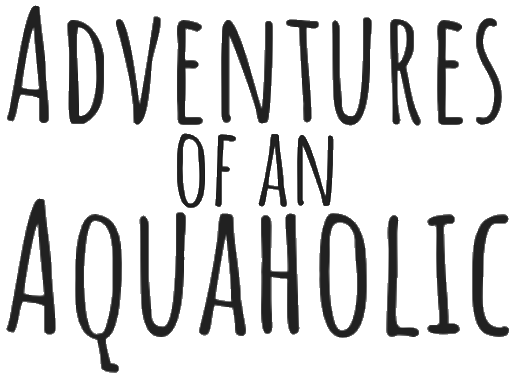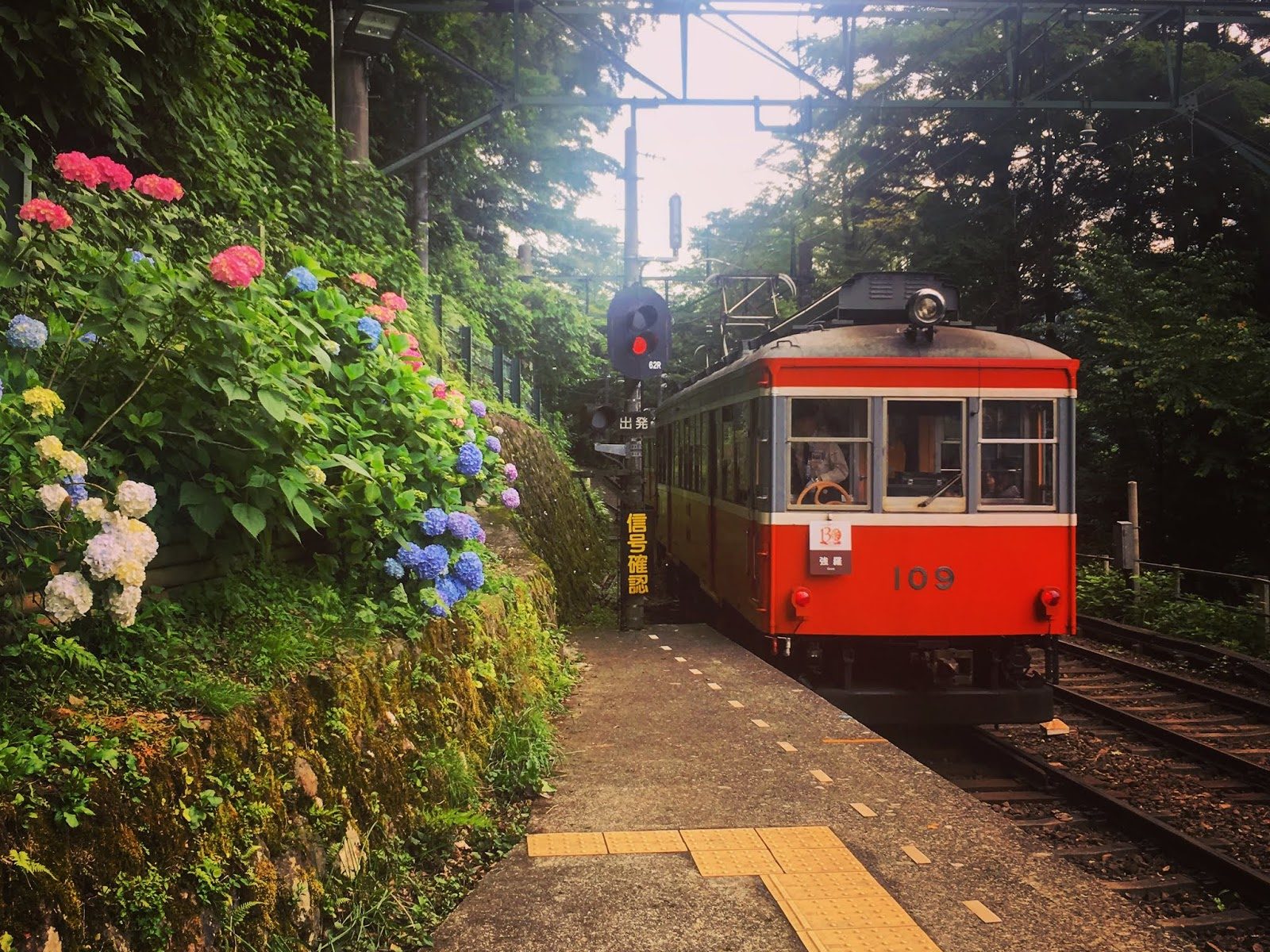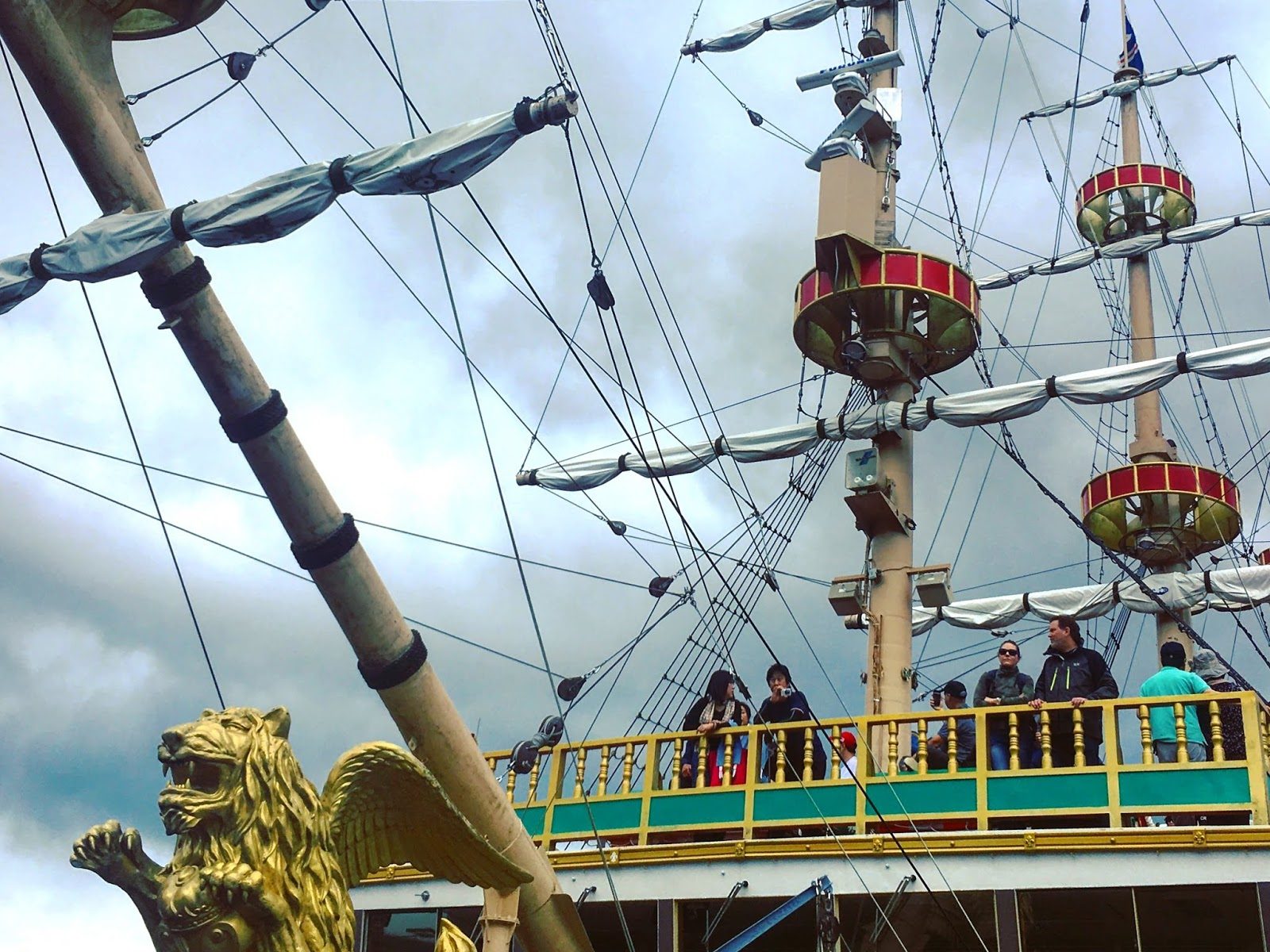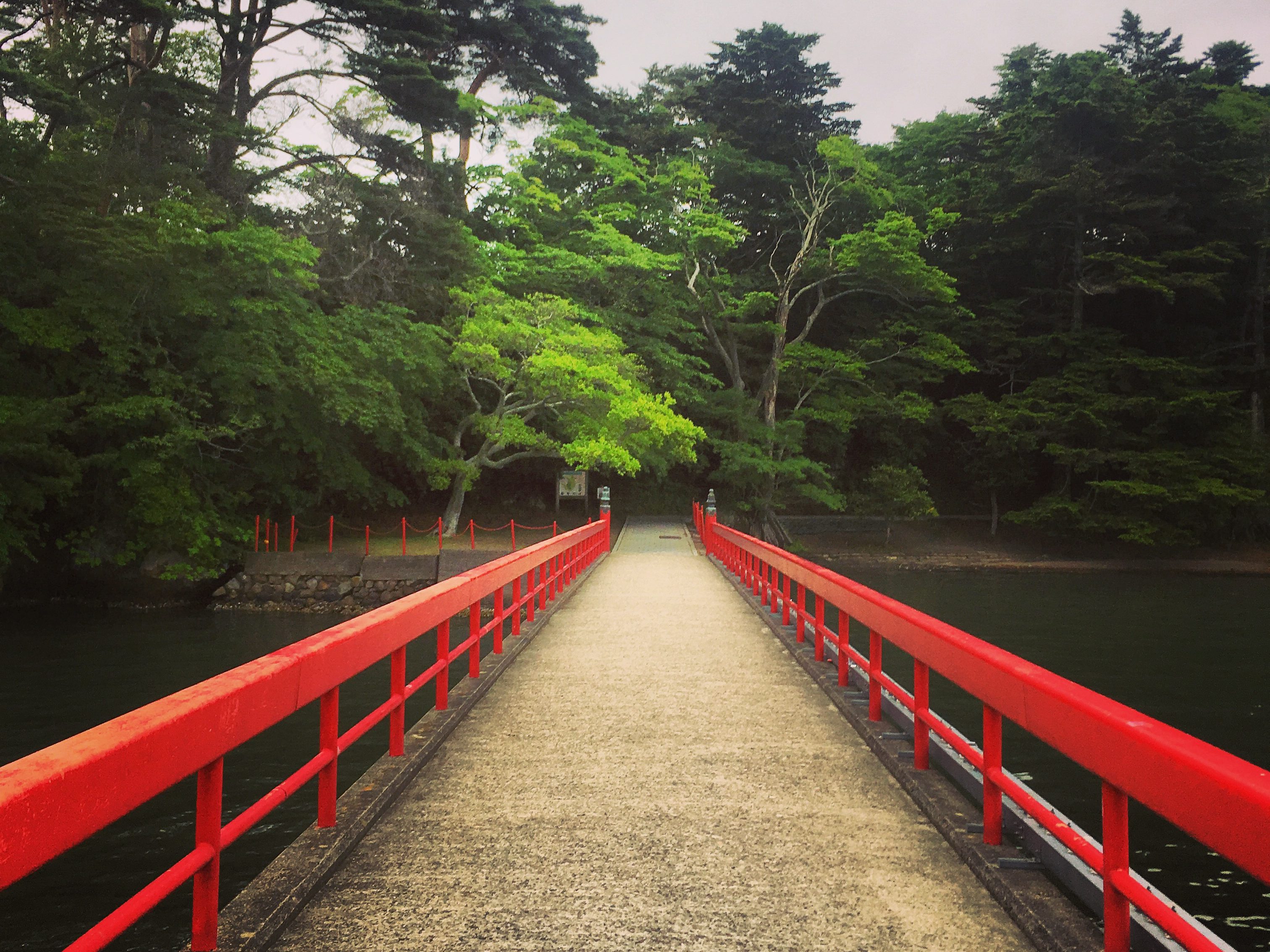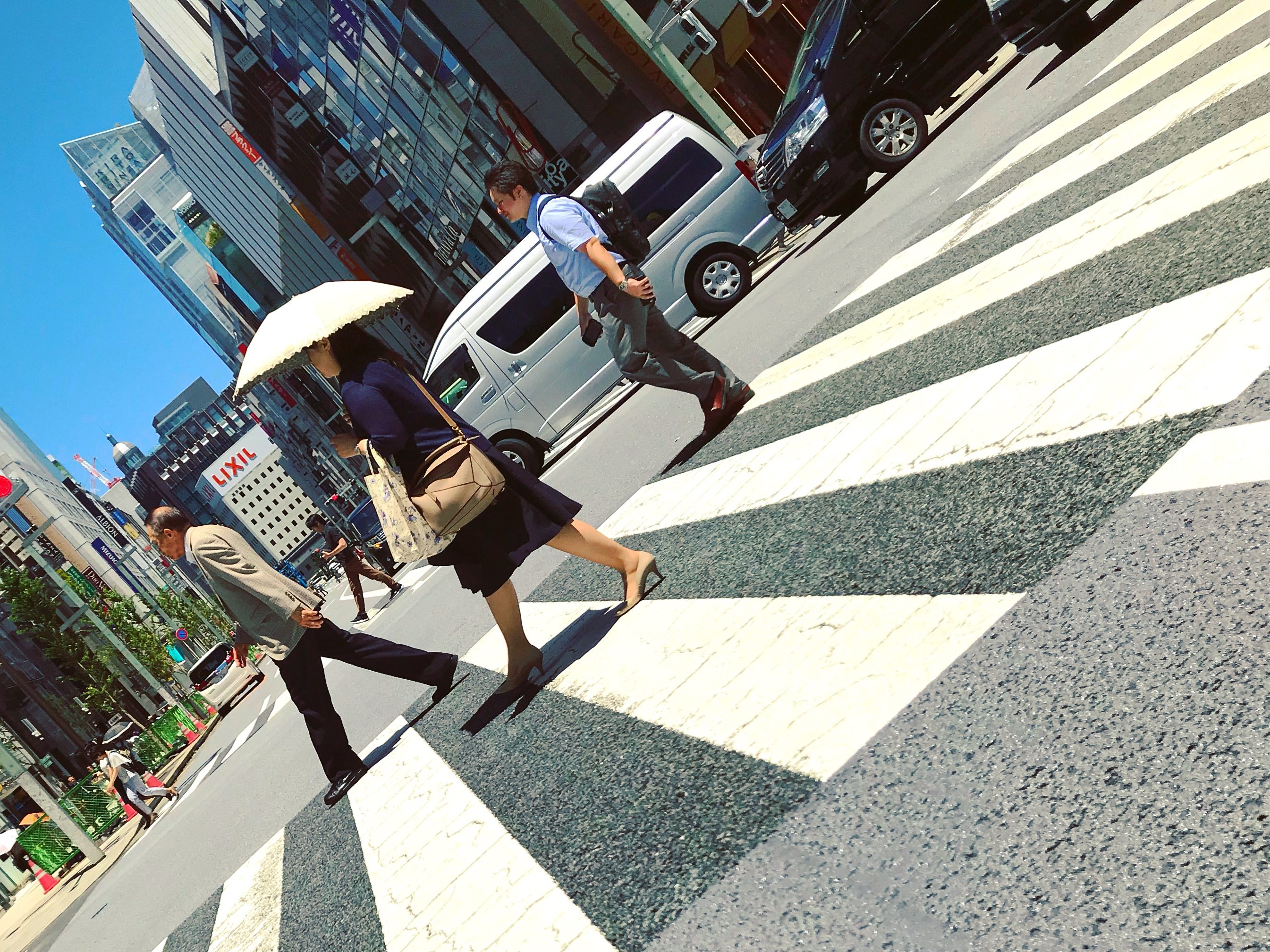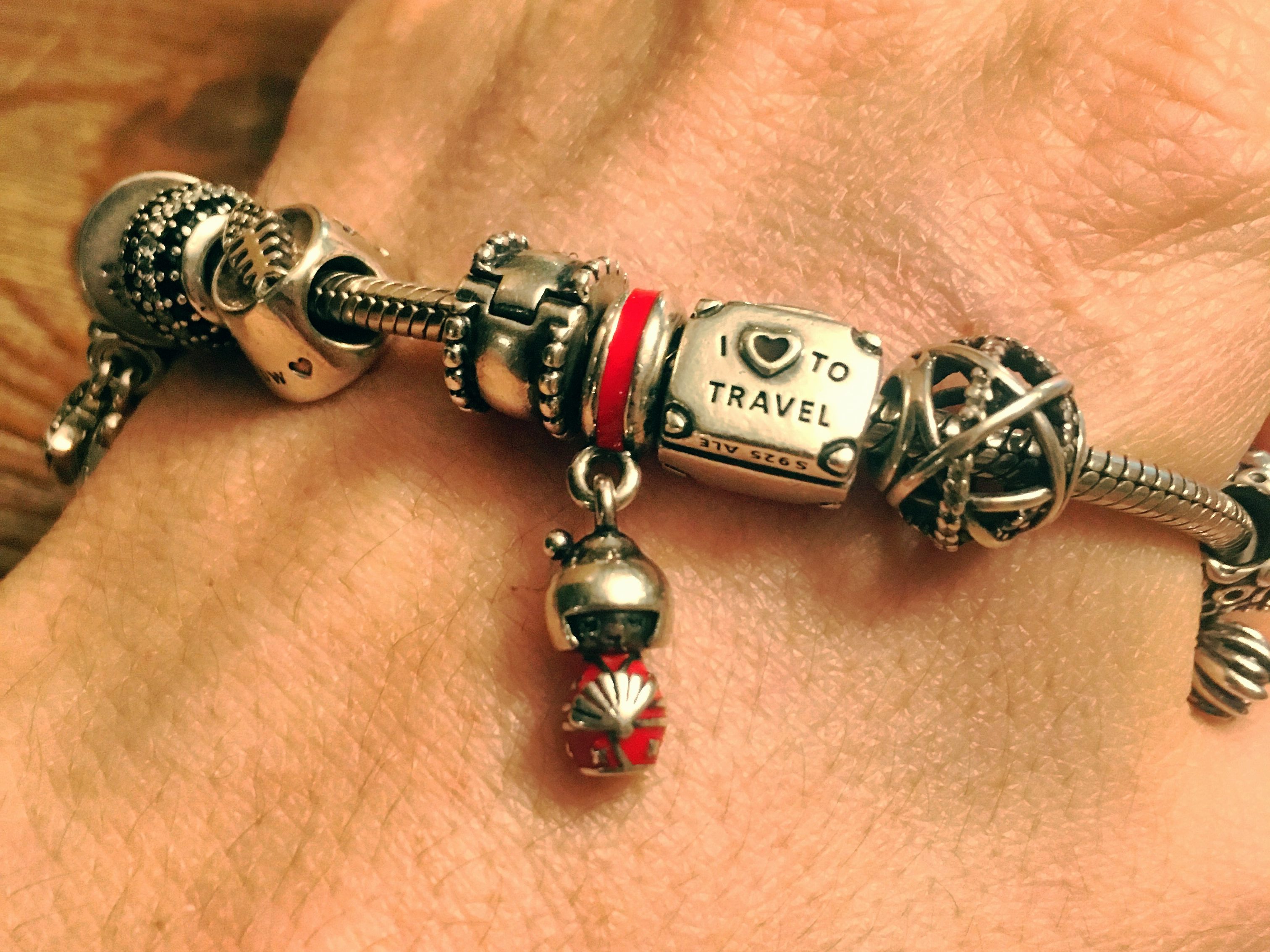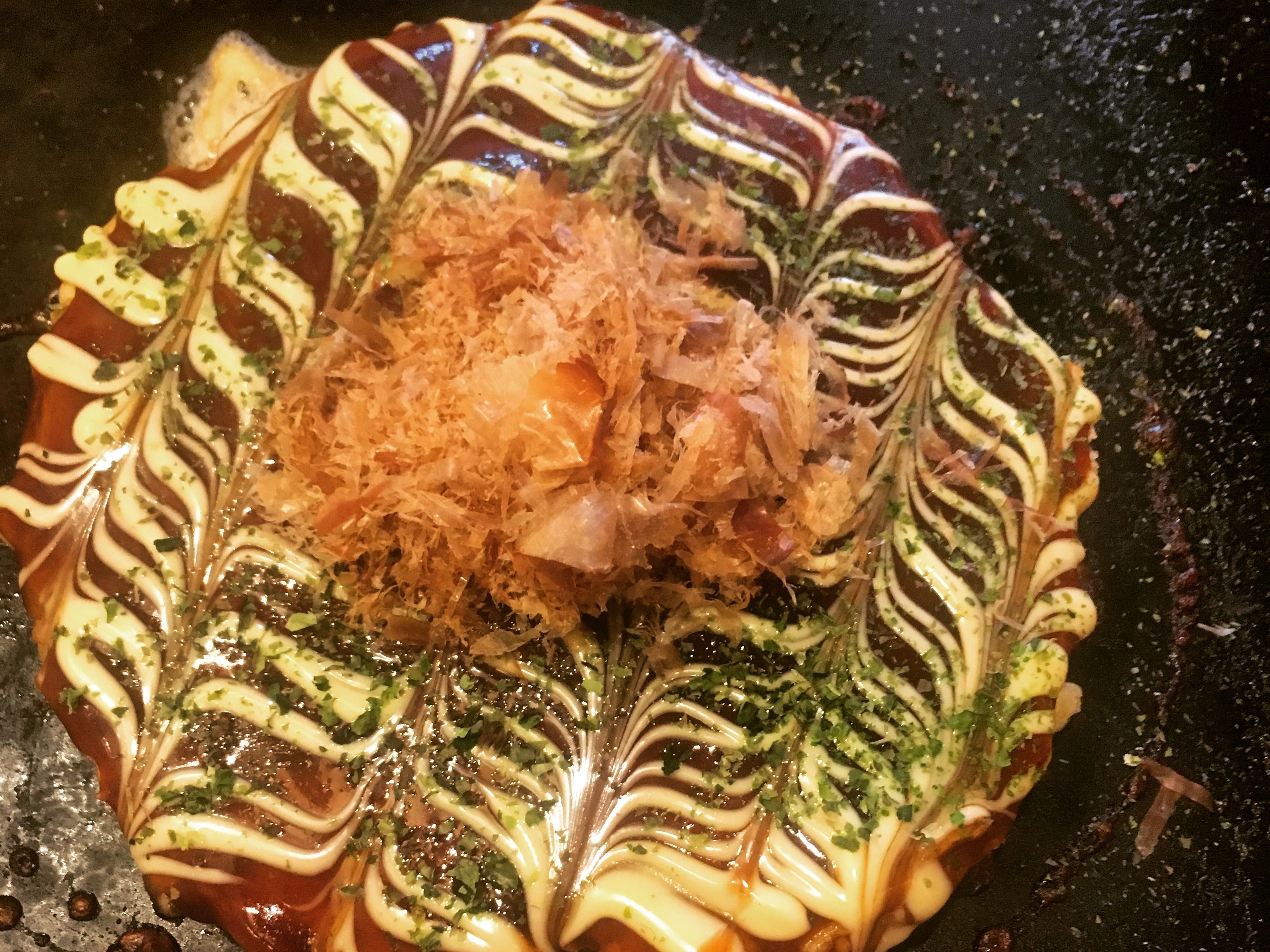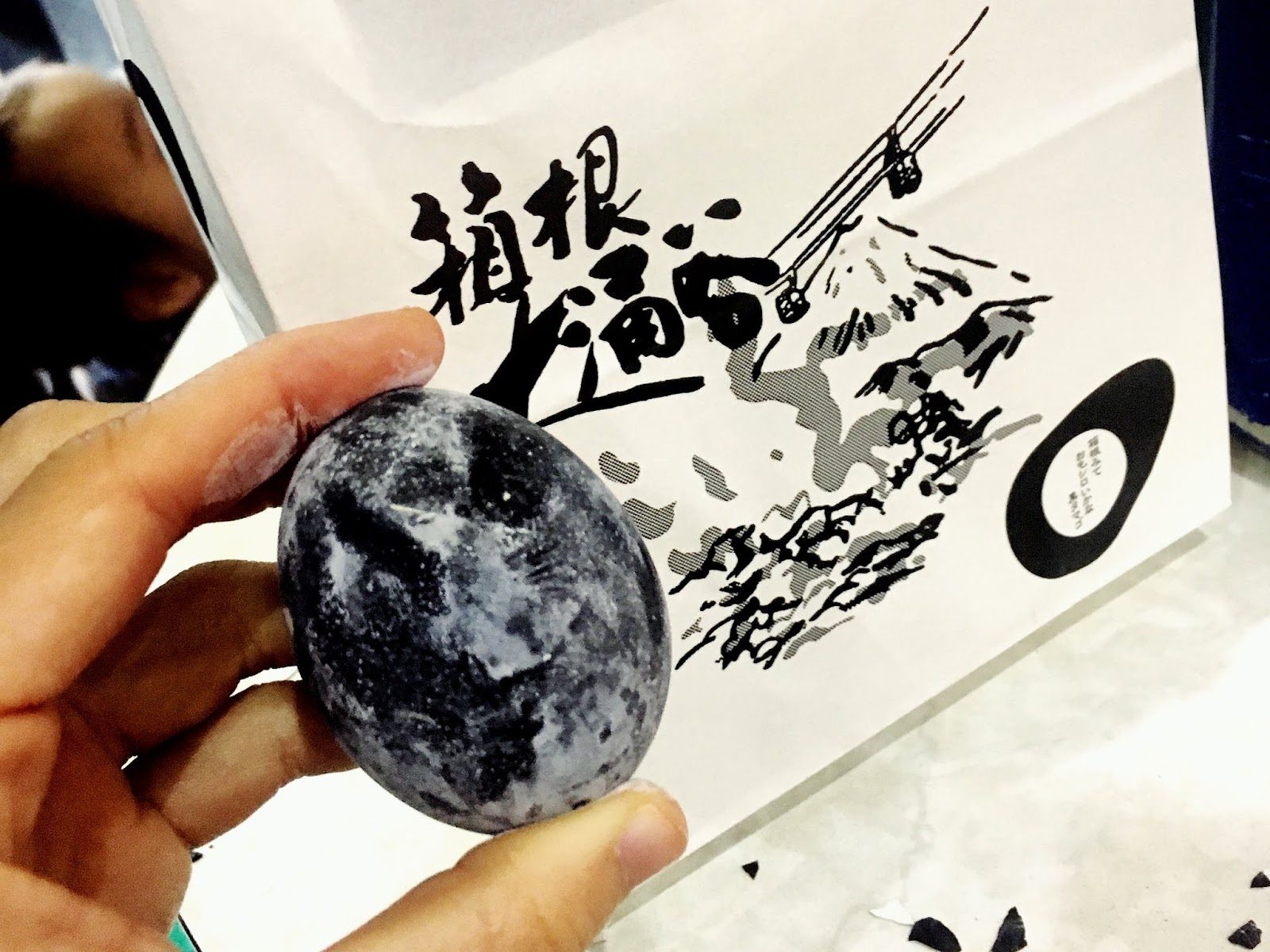
We Came for Mount Fuji but Only Found Black Eggs
Japan Day 11 – Hakone
Is it possible to hear the word Japan without an image of Mount Fuji coming to mind? Japan’s tallest mountain has long inspired many an artist and poet, and imagery of the majestic volcano is nearly synonymous with the country. It is an active stratovolcano that last erupted in 1708, and a subject of Shinto mythology. Such an incredible natural wonder and yet it had eluded me over the course of three trips to Japan.
Equipped with our rain jackets and umbrellas, we hiked back up the steep road to the little train station. It was a much different experience waiting for the train to arrive on a little open air platform, surrounded by nature and quiet, rather then a hustling, bustling station with tens of thousands of people rushing about. We boarded the same train we had debarked from the day before, as we would be continuing along the same route, further up the mountain.
| Tozan Train conductor waiting to start his shift. |
At the end of the line, we left the train and boarded a cable car. The cable car brought us straight up the mountainside, at an incline that was obviously very steep. Looking down from our seats towards the back of the cable car was almost enough to evoke a slight sense of vertigo. I couldn’t help but be reminded of the cable car scene in “The Grand Budapest Hotel.” The scene was animated, of a little cablecar ascending up the mountaintop where the hotel was located. Perhaps it was animated because they couldn’t find a real cablecar steep enough to film. They should have looked in Hakone. The clouds were only becoming thicker, and the visibility decreasing more and more the higher up we climbed.
When the cable car reached the end of its track, we switched over to a ropeway, or gondola as I’m more accustomed to calling such a mode of transportation. By this point the visibility was so terrible that we couldn’t even see the the ropeway ahead of us. The temperature outside dropped drastically, causing the windows to condensate. The condensations didn’t make things any worse though, the visibility was just the same without it. I pointed out the direction Mt. Fuji was meant to be in, and Fletch and I both burst into a fit of hysterics. Suddenly the whole idea of sightseeing with zero visibility seemed rather hilarious. We reached a peak, and then felt the gondola descending again. I was sure that had to be the million dollar view. If only we could see it…
| The beautiful view from the ropeway window. Fletch is pointing towards Mt. Fuji. |
The gondola dropped us off at a halfway station that felt as though it were on a mountaintop. We couldn’t see where we were of course. We stepped out and were greeted by cold air and the stench of sulfur and hard-boiled eggs. Even a remote little area on a mountaintop in Japan had a food it was famous for. This area, Owakudani, was known for its hard boiled eggs, cooked in the hot springs, causing a chemical reaction that turned the eggs as black as coal. The smells of sulphur and eggs and the sight of eggs turned black wasn’t exactly appetizing, but it really wasn’t an option to not try something so bizarre. The eggs were sold hot, in bags of five for $5. Standing tables were scattered around, crowded with people cracking away the black egg shells.
| The black tamago. |
Apparently to make the eggs, they are slowly boiled for sixty minutes in hot spring water that is 80 degrees Celsius. Iron properties in the hot spring water cling to the porous shells. A reaction with hydrogen sulfide turns the shells black. The blackened eggs are then transferred to a steam container and steamed for fifteen minutes at approximately 100 degrees Celsius to complete the process.
| Owakudani’s famous, hot-spring boiled, black eggs. |
I’ve never been the biggest fan of hard-boiling eggs, but these were surprisingly sweet and delicious and hit the spot. They also gave my teeth a weird, chalky feeling. And according to legend, eating black eggs would extend one’s lifespan by seven years. You never knew an egg could be so exciting, did you?
We browsed around the gift shop for a few minutes. Everything was either packaged food items or cute. Plush Mt. Fujis with happy faces sat on the shelves next to keychains of Hello Kitty hatching out of a black egg. As we browsed, we realized we were still hungry and so went into the buffet restaurant for lunch. The large windows overlooked the nonexistent view.
There was meant to be a second ropeway, back down the mountain to the lake, but that was under renovation and so we instead boarded a bus for the next leg of the journey. The bus wound down the mountain and dropped us of at the station for the cruise. The visibility cleared up a little bit at lower elevation, enough to see there was a lake, but that was about it.
A t-shirt in the gift shop window caught Fletch’s eye, because it was exactly the sort of thing I always made fun of. It said, “The mountain [sic] are calling.” I do love a bad english translation. Obviously I had to get the shirt.
The sightseeing cruise that picked us up looked like a big, ornate pirate ship. Why a pirate ship on a small lake in the mountains in Japan? I haven’t the slightest idea. There were a fleet of three of these ships, and ours was painted blue and named “Victory.” According to the Hakone tourism website, “Victory is modeled after the famous HMS Victory, a warship built in England in the 18th century that took part in many historic sea battles…” so not a pirate ship after all.
| Victory sightseeing cruise. |
| A beautiful day for some sightseeing on Ashi Lake. |
| The fog is finally beginning to lift. |
The visibility was clearing up enough to see some pretty little towns along the shoreline, but not nearly enough to see Mt. Fuji. The boat dropped us off after 30 or 40 minutes and we rode another bus back to the main train station, completing our counter-clockwise loop. Then we rode the train back up to our stop, Miyanoshita. What a fun day of seeing grey skies, black eggs, and blue pirate ships. We made it back to the room and a digital photo of Mt. Fuji mounted next to our door made us laugh and say at least we had seen it.
| Another shot of the hydrangeas along the Hakone Tozan Railway. |
Hakone is also well known for its onsen, which are hot spring baths. Onsen etiquette is very particular in Japan. Men’s and women’s baths are separate, because bathing occurs in the nude. You shower off first, so that you’re squeaky clean before entering the hot spring. Most onsens in Japan also have a very strict no-tattoos policy. For Americans, bathing nude with a bunch of strangers doesn’t exactly sound like the relaxing experience that a hot spring visit should entail. Plus separating men and women meant that I couldn’t share this experience with Fletch. Luckily I found an onsen that had private rooms available to book.
Around dusk, a shuttle bus picked us up from the main train station and brought us 3 minutes over to Hakone Yuryo. The grounds were very beautiful and well landscaped, and a deep, peaceful air surrounded the place. It felt like a spa out in the middle of a mountain forest. We checked in and the front desk lady presented us with a basket full of robes and towels, and handed us the key to our private hot spring. I had really just expected the hot spring and a shower in the corner, but when we unlocked the door it was to find an entry area, a sitting room with complementary lemon jello snacks that were rather odd, a changing room with a mini bar, and finally the open air, stone pool, hot spring. Walls along two sides ensured our privacy, and the pool looked out over the mountainside with enough trees to know that no one was peeping in easily.
| Private onsen at Hakone Yuryo. |
We relaxed in the 40 degree water (104 F) for a full hour. The tranquility of the woods combined with the hot water melted away any tension from a week and a half of being on the go and carrying backpacks on and off trains. Ah, bliss.
When our hour was up, we lazily and happily made our way back up the mountain via the train to our room. We stopped at a conbini along the way for onigiri (rice balls stuffed with different fish fillings and wrapped in seaweed). Neither of us were extremely hungry after soaking in the heat, plus we really couldn’t beat a $17 dinner for two. A message from my sister informed us that there had been a big earthquake in Osaka where we were headed in a few days. How lucky that we had missed the one in Sendai after leaving, and now another in Osaka before arriving. Of course Japan experiences small tremors all the time, and they are nothing to be concerned about, but the ones big enough to make the news are capable of doing some damage, and at the very least, altering travel plans.
We settled in for our last night in the Airbnb room. The space was comfortable, with all the right amenities and a satisfactory amount of space for Japanese standards. The futons were even surprisingly cozy, with big fluffy, down blankets to get lost under. Everything about the room could have been perfect, except it offered zero sound proofing from the upstairs neighbors and the outside world. The upstairs unit was big enough to sleep six people, and they sounded like a parade of elephants walking over drums the entire time. Boom boom boom. Outside noise almost never bothers me, but the amount of sound echoing down through the floor was not something there was any chance of tuning out.
A CD player was sitting on the little table, and after inspection we discovered that there was an actual CD inside. How 90’s. I haven’t played a CD in years. We pressed play and a good assortment of hipster music distracted us slightly from the pounding upstairs. And so ended our day in Hakone.
| I don’t remember where exactly we saw this dude on our walk home, but I liked him. |
